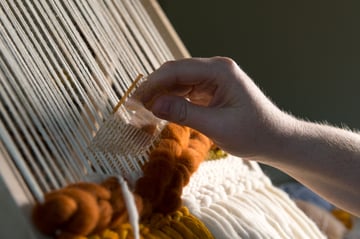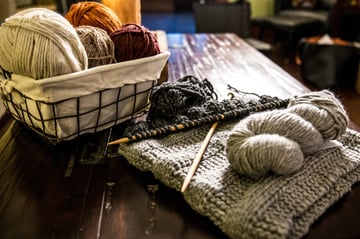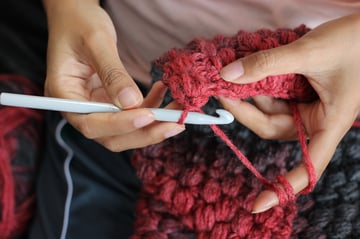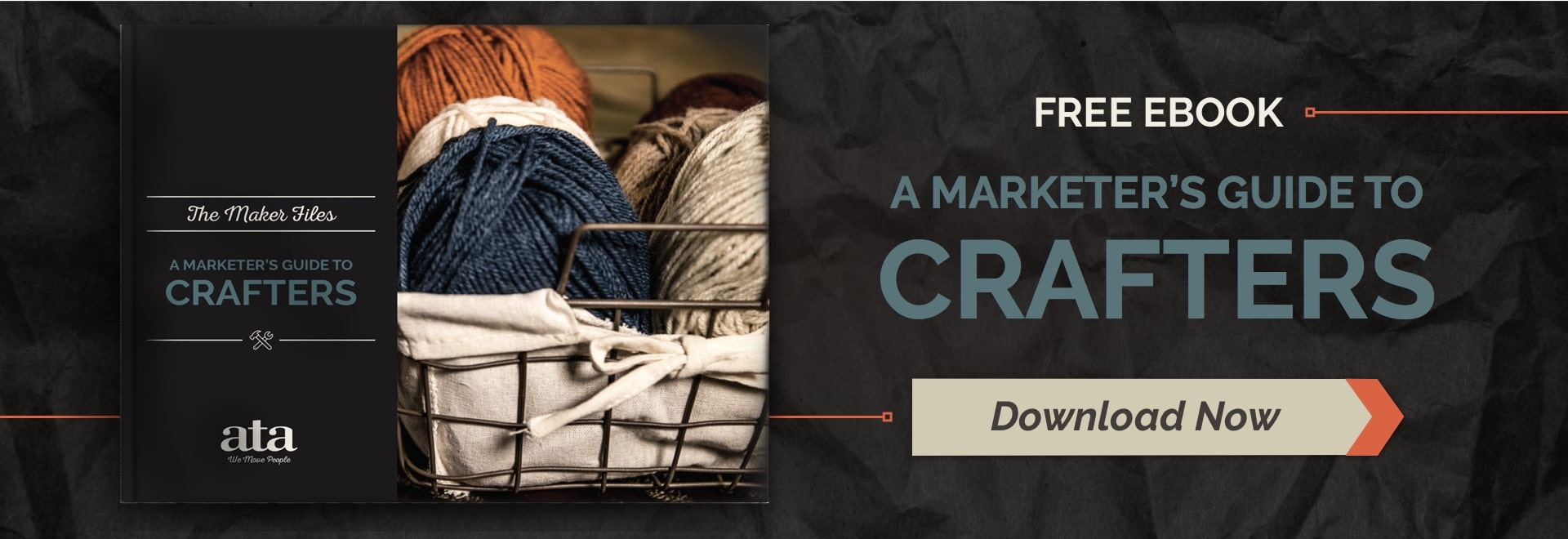 The internet is one of the most important tools behind the rise of the maker movement today. Namely, the ability for makers to educate themselves about their desired crafts has been a huge motivator and inspiration in multiple craft segments, including the fiber arts. With all the makers and brands out there that are sharing their tips and processes, however, how can you make sure your tutorials stand out from the competition and win the attention of knitters, weavers, and all fiber artists out there?
The internet is one of the most important tools behind the rise of the maker movement today. Namely, the ability for makers to educate themselves about their desired crafts has been a huge motivator and inspiration in multiple craft segments, including the fiber arts. With all the makers and brands out there that are sharing their tips and processes, however, how can you make sure your tutorials stand out from the competition and win the attention of knitters, weavers, and all fiber artists out there?
Based on our conversations with today's fiber artists, we've been able to narrow down a list of the most important elements of fiber art how-to content. In this post, we'll explain how to create effective tutorials for fiber artists and discuss the importance of sharing your expertise with your target audiences.
5 Elements of Effective Fiber Art Tutorials
 Choose a specific topic. The more specific and narrow your tutorial's topic is, the easier it will be to deliver a how-to that will actually help your audience learn what they're trying to learn. Instead of choosing an extremely broad topic like "How to knit," try choosing something like "How to knit a slouchy beanie on a round loom." Your more specific topic will not only help your content rank higher for their keywords in a search engine, but a narrow topic also helps ensure that the fiber artists who find your tutorial are actually getting the information they're looking for.
Choose a specific topic. The more specific and narrow your tutorial's topic is, the easier it will be to deliver a how-to that will actually help your audience learn what they're trying to learn. Instead of choosing an extremely broad topic like "How to knit," try choosing something like "How to knit a slouchy beanie on a round loom." Your more specific topic will not only help your content rank higher for their keywords in a search engine, but a narrow topic also helps ensure that the fiber artists who find your tutorial are actually getting the information they're looking for.- Include clear visuals. Whether your tutorial is a video or written out on your blog, clear, quality visuals are absolutely required in order to communicate what you're trying to teach. But not only should you use high quality images or video, you need to make sure your visuals clearly demonstrate the skills required to complete the tasks. Fiber artists will need to see the hands of the person demonstrating in order to understand what they need to do. For an effective tutorial, your visuals should enhance the explanations you're able to provide in a well-lit, easy to see working environment.
- Don't skip steps. Less efficient fiber art tutorials often make the same mistake: they make assumptions about what the audience already knows. In order to make a more useful tutorial, you shouldn't skip over any of the steps of the process. While it may not be useful to spend a lot of time explaining something like a basic stitch or technique, you'll need to find the right balance between explaining that step and introducing more advanced concepts. If you can't include every detail, you should point your audience toward additional resources that can help explain the finer points of required techniques. Based on the difficulty of your tutorial, you may be able to make some assumptions about your reader's knowledge, but it's always best to err on the side of caution and provide extra information rather than not enough.
 Market your product sparingly. It's important to remember that while you should certainly show your own products and their benefits, most tutorials should not be merely an ad for your product. By focusing on educating fiber artists about certain skills or projects, you can provide value while subtly introducing your brand and products. If your tutorial comes across as little more than a thinly-veiled commercial, fiber artists are much more likely to click away and not return.
Market your product sparingly. It's important to remember that while you should certainly show your own products and their benefits, most tutorials should not be merely an ad for your product. By focusing on educating fiber artists about certain skills or projects, you can provide value while subtly introducing your brand and products. If your tutorial comes across as little more than a thinly-veiled commercial, fiber artists are much more likely to click away and not return.- Deliver on your promises. Finally, in order to build brand awareness and loyalty, it's critical that you actually teach fiber artists what you set out to explain. When you choose your tutorial's specific knitting, weaving, or fiber art topic, you need to ensure that your tutorial sticks with that topic until the end. Presumably, your audience clicks on your tutorial based on the promise you make in your title, so be sure that your content actually delivers that information. For example, if you create a tutorial on choosing the right yarn for a knitting project, it's not enough to simply explain the difference between types of yarn. You'd need to include tips for actually choosing the correct type. In all likelihood, if your tutorial has the first four elements on this list, you'll be in a much better position to delivering on the promises your tutorial makes from the start.
Creating Tutorials Fiber Artists Love
 Providing tutorials and how-to content for fiber artists benefits both your brand and your potential customers at the same time. While publishing content is great for SEO and helps crafters find your brand online, it also allows you to share information with your audience which establishes your brand as an expert in your industry. If you can associate your brand's name with the fiber arts, crafters will be more likely to remember and turn to you when they have questions or need a new product or material. While adding value to a fiber artist's crafting experience should be the main goal of creating educational tutorials, the benefits of content creation for your company can also be long reaching.
Providing tutorials and how-to content for fiber artists benefits both your brand and your potential customers at the same time. While publishing content is great for SEO and helps crafters find your brand online, it also allows you to share information with your audience which establishes your brand as an expert in your industry. If you can associate your brand's name with the fiber arts, crafters will be more likely to remember and turn to you when they have questions or need a new product or material. While adding value to a fiber artist's crafting experience should be the main goal of creating educational tutorials, the benefits of content creation for your company can also be long reaching.
Meanwhile, quality content improves your brand's customer experience and delights knitters, weavers, and other fiber artists who learn valuable skills from your blogs, videos, and other content. Tutorials work to expand the types of projects that fiber artists are able to create, and they're likely to remember where they learned the necessary skills if the tutorial is done well. These positive experiences build brand trust and loyalty among your company's target audience, which can potentially lead to future purchases and other valuable interactions and relationships. Overall, producing your own effective tutorial content is one of the best ways to increase your brand's reach while also building connections with today's fiber artists.




